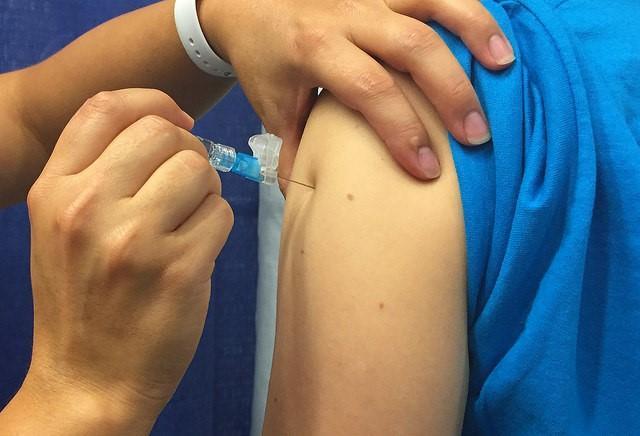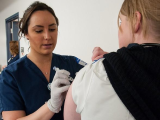Estimated influenza vaccine effectiveness (VE) in California during the 2023-24 respiratory virus season was 41% against lab-confirmed flu and 68% against influenza B, but just 32% against influenza A and 26% among older adults.
These findings, published yesterday in The Journal of Infectious Diseases, were made possible by California's 2023 mandate requiring flu vaccination reporting and all flu lab test results to the state immunization information system, the Centers for Disease Control and Prevention (CDC)-led research team said.
The investigators used data from the California Reportable Disease Information Exchange and the California Immunization Registry on all Californians ages 6 months and older tested for flu from October 2023 to June 2024 and on recipients of that season's flu vaccine, respectively.
Higher effectiveness in kids
Flu lab test positivity ranged from 1% to 19% per week over the study period. Of the 1.4 million test results, 9% were positive for flu, of whom 30% were vaccinated against flu at least 14 days before the test. In total, 73% were influenza A, 19% were type B, and 8% were indeterminate.
Of 7,981 subtyped influenza A results, 84% were H1N1, and 16% were H3N2. The median age was 30 years among flu patients and 43 among controls. Overall, 25% of people had received the 2023–24 flu vaccine, including 19% of flu patients and 31% of controls. Median time since vaccination was 92 days among flu patients, compared with 105 days among controls.
Adjusted VE was 41% (95% confidence interval [CI], 40% to 42%) against confirmed flu and 68% (95% CI, 66% to 69%) against influenza B, falling to 32% (95% CI, 31% to 33%) against influenza A and 26% (95% CI, 24% to 29%) among adults aged 65 and older.
Estimated VE against any flu type was higher among children (53%) than among adults ages 18 to 49 years (42%) and 50 to 64 (30%). Similar patterns by age-group were seen for influenza A (range, 43% among children to 23% in adults 65 years and older) and for influenza B (range, 71% among children to 58% in adults aged 65 and up).
Protection greatest 14 to 29 days post-vaccination
Overall VE H1N1 was 44%, while it was 25% against H3N2, although the researchers said these data should be interpreted with caution because positive type A specimens from patients with severe disease may have been more likely to have been submitted to public health labs for subtyping.
Differences in viral evolution may contribute to waning vaccine effectiveness or immune escape.
VE was highest among people with a flu test result 14 to 29 days after vaccination, at 59%. Estimated VE was lower with increasing time between vaccination and testing: 30 to 59 days (52%), 60 to 89 days (39%), 90 to 119 days (34%), 120 to 149 days (35%), 150 to 179 days (34%), and 180 days or more (23%). Among children 2 to 17 years old, VE for live attenuated influenza vaccine was 45% and 52% for inactivated vaccines.
"Differences in viral evolution may contribute to waning vaccine effectiveness or immune escape," the authors wrote.
They noted that lower VE estimates with increasing patient age are consistent with those of a meta-analysis of test-negative studies conducted from 2004 to 2015. "Age-related factors that contribute to lower VE might include diminished adaptive immune response, increased prevalence of comorbidities, and frailty," they wrote.




















